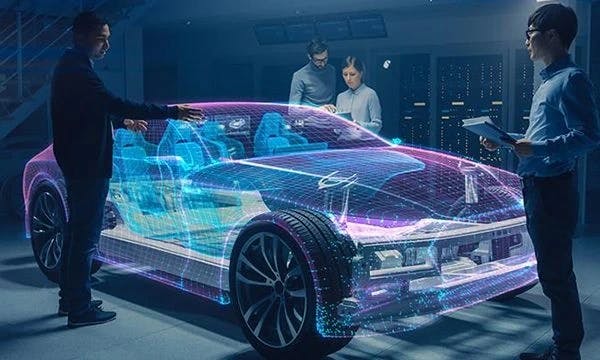The Society of Automotive Engineers (SAE) has defined six levels of vehicle automation, ranging from fully manual (level zero) to fully autonomous (level five).
Individual industry players are at various stages of this autonomous journey. But, according to Muthualagappan Sathappan – Global Head, Autonomous & Connected Solutions at HCLTech, the majority are at the third level of conditional automation. Here, vehicles have environmental detection capabilities and can perform most driving tasks, although human override is mandatory.
“This is the current state of the passenger vehicle industry. Interestingly, the commercial vehicle industry, which is traditionally one step behind the passenger segment when it comes to technology, is one step ahead when it comes to autonomy,” says Muthualagappan, speaking at VECS 2023—the event that focuses on the autonomous and Connected services of transportation.
“This is because in segments like trucking/mining vehicles the use cases are narrowly defined, such as driving materials up and down a motorway/mines. This means achieving level four sooner on the autonomous scale is within the commercial vehicle segment’s reach,” he adds.
For the rest of passenger vehicles, Muthualagappan predicts that a fully autonomous reality will be seen between 2040 and 2050.
Autonomous challenges
There a several key challenges that have held back the deployment of fully autonomous vehicles until the predicted 2040 and 2050 timeline.
The ecosystem challenges include technological, legal, political and the impact of COVID-19.
From a technology standpoint, the industry is struggling with deploying autonomous driving solutions in difficult weather conditions, such as snow, rain and dust. These weather systems disrupt the various sensors systems needed to make an autonomous vehicle work.
Advanced driver assistance system sensors and components can help, but they are expensive for the current volume levels, because they’ve not yet reached the economy of scale to be mass produced.
The lack of real-time map data in certain countries and the significant amount of data that needs to be stored, analyzed and protected is also a hurdle. “There is a looming cybersecurity threat to electronic control units,” notes Muthualagappan.
The legal challenges surround ownership. With autonomous vehicles, it’s still being decided who the owner is. “Is it the driver or the manufacturer? Who will pay the insurance? This isn’t clear yet,” says Muthualagappan.
From a political and economic perspective, developing countries are hesitant about rolling out fully autonomous vehicles. “There is a fear about loss of revenue and a loss of jobs,” he continues.
The impact of COVID-19 also derailed autonomous ambitions. According to Muthualagappan, “the pandemic delayed R&D and production, which even though is a near term impact, has held back the road to fully autonomous vehicles”.
Making autonomous vehicles a reality
An autonomous vehicle consists of an advanced driver assistance system, which is based on sensors which includes perception, localization and path planning. In addition, it requires control systems for steering, braking and acceleration.
Developing these machines requires a significant collaboration within the automotive ecosystem, which includes OEMs, Tier 1 suppliers of electronic control units, semiconductor chip makers and sensor manufacturers, who supply equipment like LIDAR and cameras. This ecosystem is then supported by the network operators that provide 4G and 5G services and the hyperscalers or cloud providers.
This ecosystem needs to function seamlessly to make autonomous vehicles a reality, while working closely with regulatory and government bodies, who provide the regulations and entire infrastructure for the ecosystem to work.
The investment needed
To move from the current levels of vehicle automation to the next stage (level four—high automation), the automotive ecosystem needs to prioritize certain investments.
“OEMs are investing in defining new product requirements, which are architecture-based, as well as in-house design and software development,” says Muthualagappan.
He adds: “The suppliers are investing in developing the complete electronics control unit, which we call the advanced driver assistance system [ADAS], while semiconductor chip manufacturers are also shifting focus to multi-core technology chips, which are needed to support the latest architecture in software defined vehicles. These manufacturers are also heavily investing in low power technology and hardware with built in artificial intelligence.”
Sensor manufacturers are also looking at improving the resolution of the cameras on the outside of the vehicles and enhancing the point cloud capability in LIDAR systems.
In addition, hyperscalers are increasing their capability and storage capacity to meet the demands of the OEMs and suppliers, while regulatory bodies are constantly developing new guidelines to support autonomous use cases, such as the National Highway Traffic Safety administration (NHTSA) in the US, which launched the Automated Vehicle Transparency and Engagement for Safe Testing roadmap in 2020.
Government bodies are creating a smart infrastructure to be used by ecosystem players in order to achieve their objectives.
Driving towards an autonomous future with HCLTech
"HCLTech is in a unique position to support a fully autonomous future. We’re a global services firm catering from chip to cloud for the needs of our customers. We’re known as one of the top product engineering services organizations in the world working with different ecosystem partners, from OEMs all the way through to semiconductor manufacturers and hyperscalers, with the aim of accelerating their time to market through our service accelerator solutions,” says Muthualagappan.





